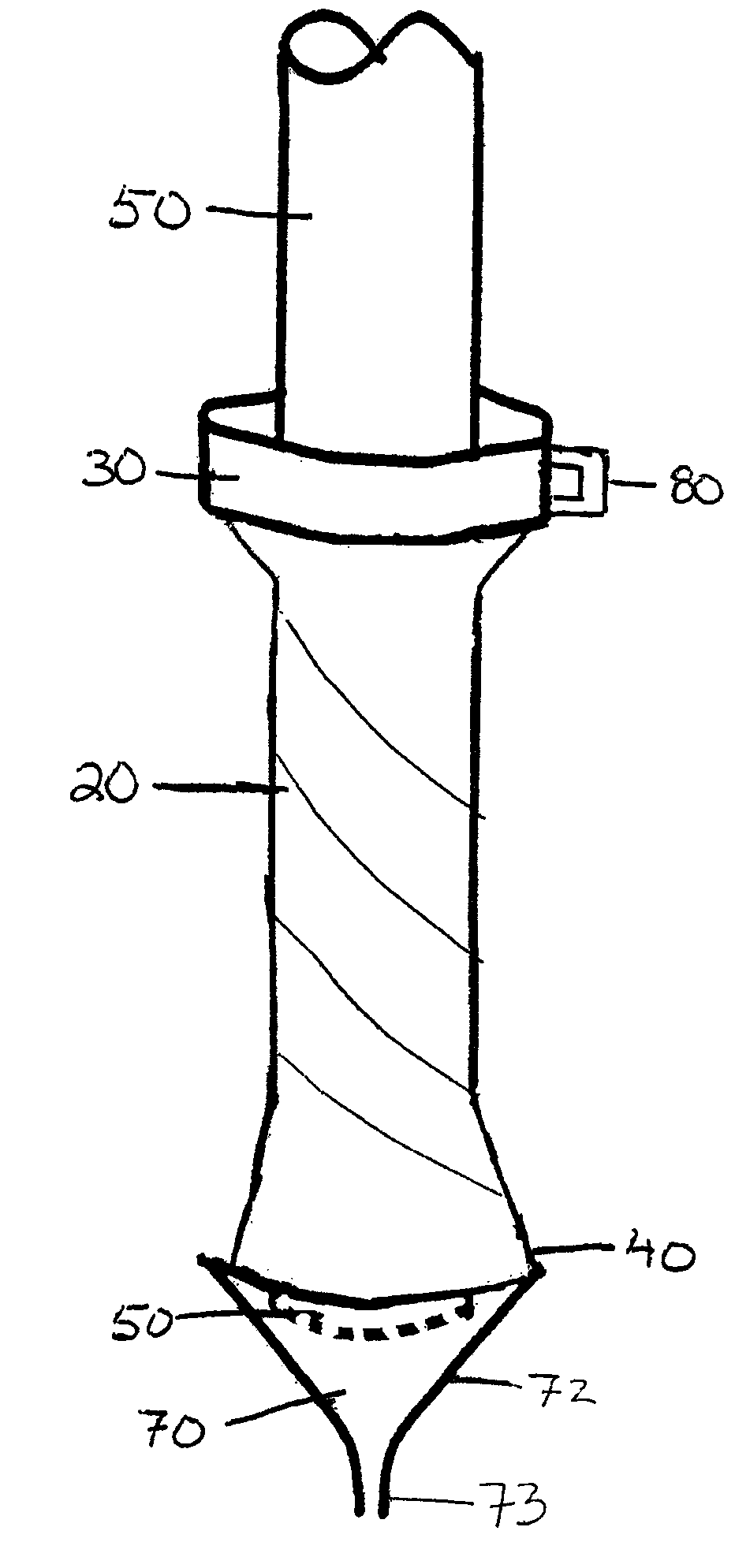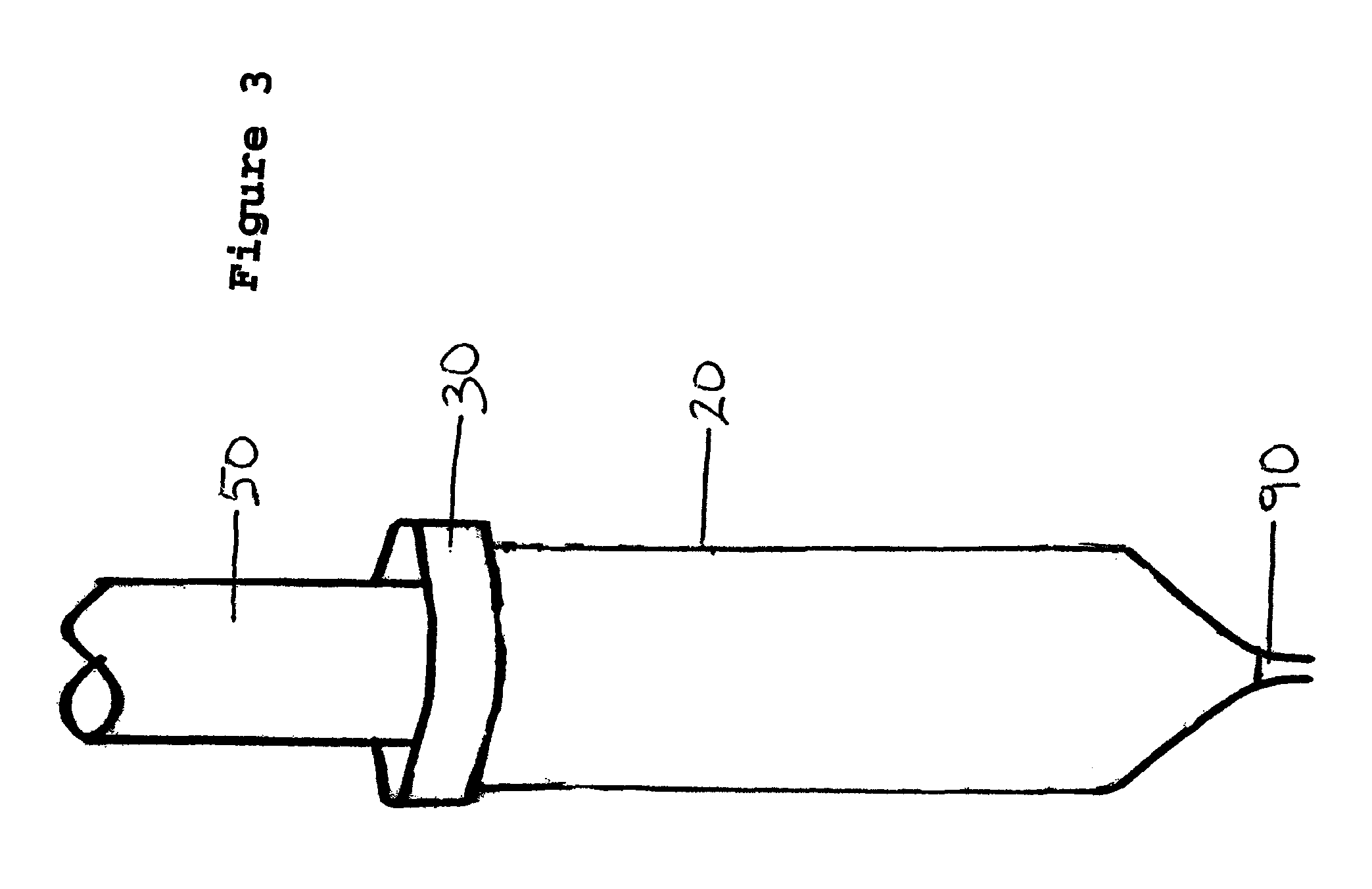Umbilical cord cell harvesting
a technology of umbilical cord and cell, which is applied in the field of umbilical cord cell harvesting, can solve the problems of reducing the service life of the patient, reducing the safety of the patient, so as to reduce the diameter of the sleeve and facilitate the movement of the actuator. , the effect of preventing backlash
- Summary
- Abstract
- Description
- Claims
- Application Information
AI Technical Summary
Benefits of technology
Problems solved by technology
Method used
Image
Examples
Embodiment Construction
[0020]Referring now to the Figures in general, wherein like reference numbers refer to the same components across the several views, there is shown an apparatus, generally designated 10, for harvesting biological material from an umbilical cord. In general application, the apparatus 10 may be used to drain biological material from a fluid-filled tube such as a vein, vessel, cord member or other tubular member. In specific application, the apparatus 10 may be used to drain biological material, including fluid, blood, cells, and specifically stem cells, from an umbilical cord. Preferably, the apparatus 10 may be used to drain biological material from across the entire diameter of the umbilical cord.
[0021]As shown in FIG. 1, the apparatus 10 includes a drain 70, such as a funnel 72 and tube 73 as shown in FIG. 1 or, as shown in FIG. 3, a drain tube 90 without a funnel for draining material from an open end of an umbilical cord 50. When a child is delivered, the umbilical cord is clampe...
PUM
 Login to View More
Login to View More Abstract
Description
Claims
Application Information
 Login to View More
Login to View More - R&D
- Intellectual Property
- Life Sciences
- Materials
- Tech Scout
- Unparalleled Data Quality
- Higher Quality Content
- 60% Fewer Hallucinations
Browse by: Latest US Patents, China's latest patents, Technical Efficacy Thesaurus, Application Domain, Technology Topic, Popular Technical Reports.
© 2025 PatSnap. All rights reserved.Legal|Privacy policy|Modern Slavery Act Transparency Statement|Sitemap|About US| Contact US: help@patsnap.com



